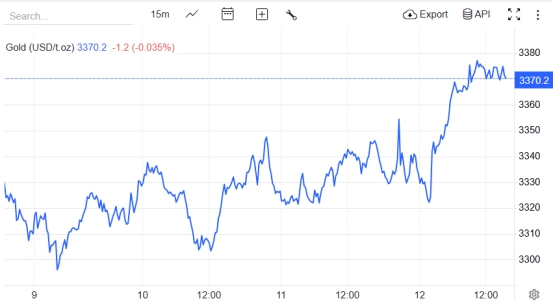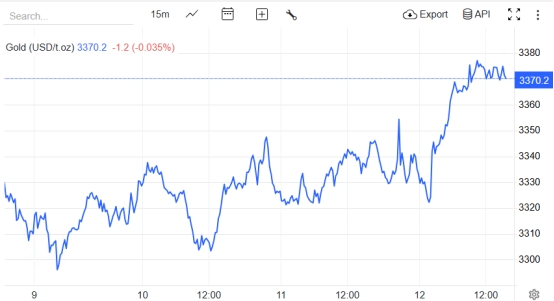US CPI is lower than expected, triggering expectations of interest rate cuts! Gold soars, and the 10-year US Treasury yield falls below 4.5%
- 2025年6月16日
- Posted by: Macro Global Markets
- Category: News

On the evening of June 11, the U.S. Department of Labor released the CPI data for May. The total CPI increased by 2.4% year-on-year (expected 2.5%), the core CPI increased by 2.8% year-on-year (expected 2.9%), and the month-on-month increase was only 0.1% (expected 0.2%), both lower than market expectations. After the data was released, spot gold soared by $12 in the short term to $3,376.3 per ounce (the highest in the Asian session on June 12), a new high this week; the 10-year U.S. Treasury yield plummeted by 5 basis points to 4.38%, and the market's expectation that the Federal Reserve would cut interest rates twice this year rose to 72%.

The core highlight of this CPI data is the loosening of inflation stickiness:
The core highlight of this CPI data is the loosening of inflation stickiness:
The growth rate of service inflation slowed down: housing rents increased by 0.4% month-on-month (previous value: 0.5%), and medical service prices remained unchanged, ending 18 consecutive months of increases, confirming that the cooling of the labor market has suppressed wages.
Energy drag was significant: gasoline prices fell 1.2% month-on-month, offsetting a 0.3% increase in food prices, becoming the main reason why the overall CPI was lower than expected.
The market reacted violently: After the data was released, the CME Fed's observation tool showed that the probability of a 50 basis point rate cut in September rose from 18% to 31%. Although the interest rate meeting on June 19 is likely to remain unchanged, Powell's policy words have become the focus. Goldman Sachs Chief Economist Hatzius said bluntly: "The CPI data has opened a window for the Fed to 'flexibly cut interest rates'. We maintain our forecast of two rate cuts this year."
2. Gold and US bonds rose together: risk aversion and policy expectations resonated
Gold: Safe-haven demand + rate cuts, double click
After the data was released, London gold was quoted at $3,370 per ounce, with a net inflow of $120 million (ETF funds) during the day, due to:

Geopolitical risks are superimposed: the escalation of the conflict between Russia and Ukraine (Russia launched 83 drone attacks in a single day) and the intensification of nuclear deterrence in the Middle East have driven safe-haven buying demand. According to the World Gold Council, global gold ETF holdings increased by 18 tons in the first 10 days of June, and the People's Bank of China has increased its holdings to 73.83 million ounces for seven consecutive months.
US Treasuries: Recession trade heats up
The 10-year U.S. Treasury yield fell below the 4.5% mark, and the 30-year yield fell to 4.72%, reflecting the market's concerns about an economic recession:

Concerns about the service industry: Although the ISM services PMI barely reached 50 (50.1) in May, the new orders index was 46.4, the lowest since November 2023.
3. Risks in the market outlook: Tariff lag effect
Tariff transmission risk: Although the May CPI did not reflect the impact of automobile tariffs, the EU retaliatory tariffs (involving $2.2 billion in U.S. goods) that took effect on June 1 may push up inflation in the third quarter.
Geopolitical variables: If the Middle East Peace Conference (June 15) makes progress, safe-haven demand may quickly fade, and we need to be wary of the "buy expectations and sell facts" market.
The expectations of interest rate cuts sparked by the US CPI data and geopolitical risks formed a "golden cross", pushing gold prices to redraw this week's high. However, we need to be wary of policy reversals after the data honeymoon period. In the short term, we should pay attention to the support of $3,360 and the resistance of $3,400. In the medium and long term, we are optimistic about the structural bull market under the trend of central bank gold purchases and de-dollarization.
